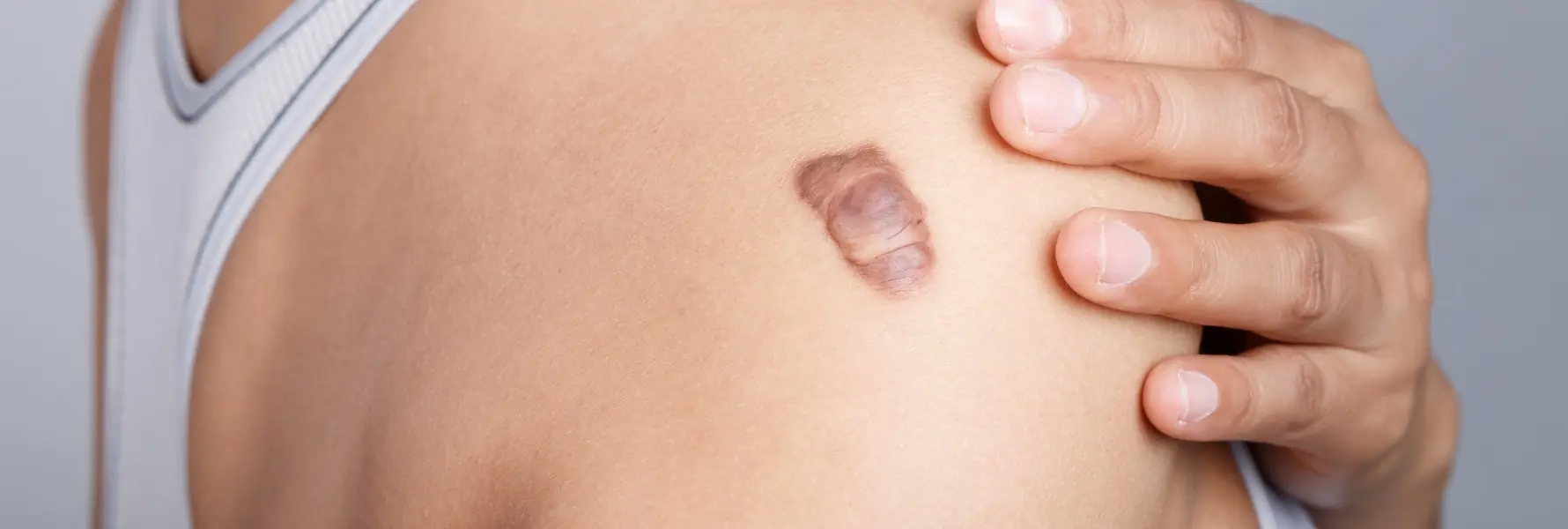What are Keloids?
Keloids are raised, thickened scars that form when the skin produces excess collagen during the healing process. Instead of stopping once the wound is repaired, the body continues to generate fibrous tissue, creating a smooth, firm overgrowth that extends beyond the original injury site. These growths are often larger than the initial wound and can appear on areas like the chest, shoulders, earlobes, and cheeks — though they may develop anywhere on the body. While keloids are harmless, they can cause discomfort, itching, and cosmetic concerns, prompting many to seek professional treatment for smoother, healthier-looking skin.
What are the Symptoms of Keloids?
Keloids develop when scar tissue continues to grow beyond the boundaries of a healed wound, often becoming larger and more prominent over time. They may take several weeks or even months to fully form.
- A raised, firm, or lumpy area of skin that may be flesh-colored, pink, or red
- Itching, tenderness, or mild pain around the affected area
- A smooth, shiny surface with irregular borders
- Gradual enlargement of the scar over time
While keloids are generally harmless, they can sometimes cause discomfort, irritation, or tightness—especially if located in areas exposed to friction from clothing or movement. In some cases, extensive keloid scarring can restrict skin flexibility or movement.
What Are the Main Causes of Keloids?
Keloids often develop due to the overproduction of scar tissue following skin injury or inflammation.
Common causes include:
Acne or chickenpox scars
Burns or scratches
Ear or body piercings
Surgical incision sites
Vaccination or insect bite marks
In addition, genetic factors play a significant role in keloid formation. If one or both parents have a tendency to develop keloids, the likelihood increases. Studies suggest that around 10% of people experience keloid scarring, with men being slightly more prone than women. People with darker skin tones also have a higher risk of developing keloids due to increased melanin activity and skin sensitivity.
Some DIY Remedies for Keloids
Treating keloids can be challenging since they result from the body’s natural healing response. Even after removal, keloids may reappear—sometimes larger than before. Therefore, it’s often best to start with gentle at-home remedies before considering medical treatments.
You can try moisturizing oils such as vitamin E oil, rosehip oil, or cocoa butter to keep the scar tissue soft and hydrated, which may help flatten and reduce its appearance over time. In some cases, keloids may naturally shrink and become less noticeable without intervention.
Dermatologists may also suggest non-invasive options like silicone pads, pressure dressings, or corticosteroid injections, particularly for newer keloids. These methods require consistent use over several weeks or months to deliver visible results.


